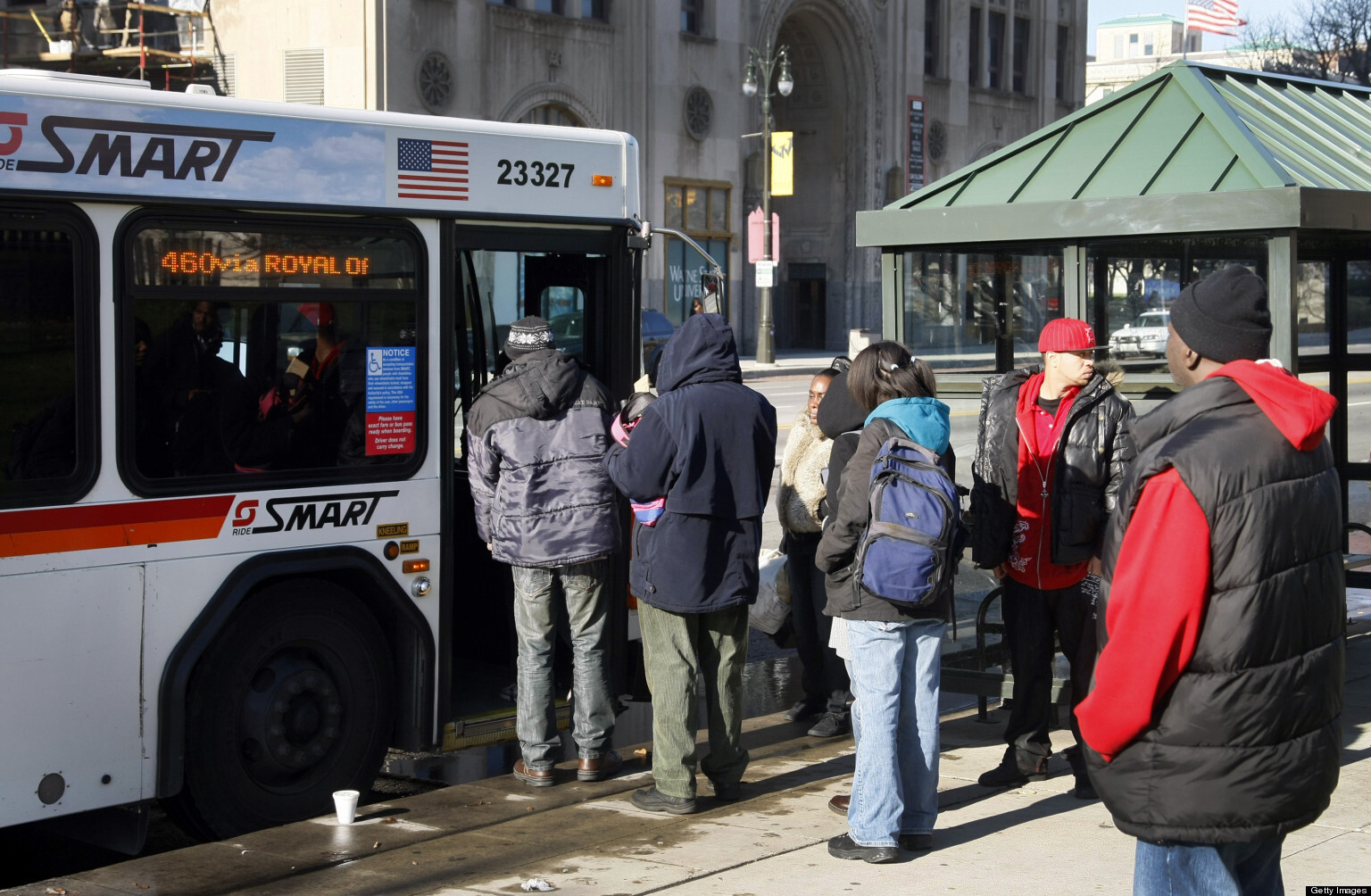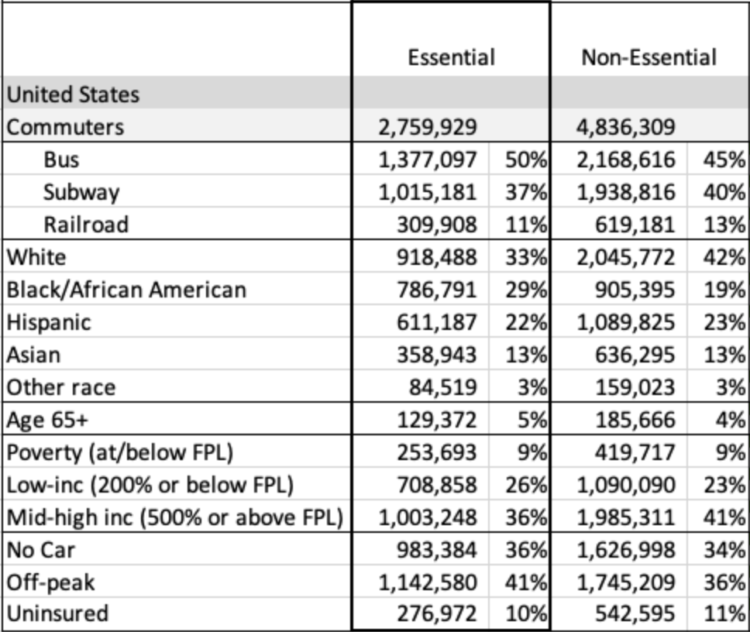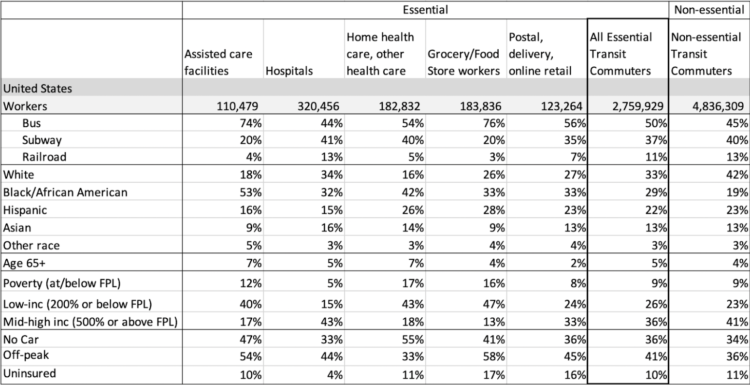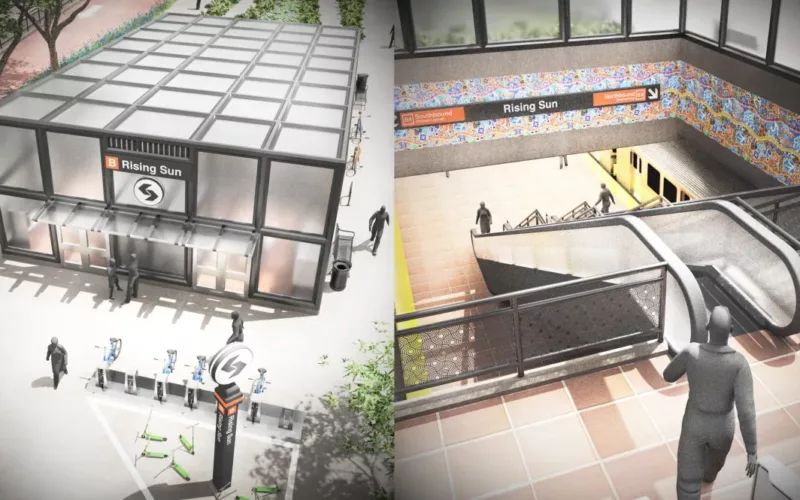
Photo: Rachel Cook/Bloomberg via Getty Images
The toll of COVID-19 is exposing America’s longstanding public health inequities. In virtually every major city that’s released demographic data, black and brown people are more likely to die from the disease — in some places, more than twice as likely — than white people.
These disparities are due to patterns of discrimination and deprivation that have created stratified health and economic outcomes. People of color and people with low incomes have worse access to life-saving health care and higher rates of existing conditions that exacerbate the effects of the coronavirus. They are also more likely to work essential jobs that can’t be done from home.
In American cities, people of color account for a disproportionate share of the 2.8 million essential workers who usually commute on transit (67%, compared to 58% of non-essential transit commuters), as do people with low incomes (26% of essential transit commuters, compared to 23% of non-essential transit commuters), according to a TransitCenter analysis of Census data.
Black people, especially, account for a high share of essential workers who typically commute on transit (29%) relative to non-essential transit commuters (19%). White people, meanwhile, comprise a smaller share of essential transit commuters (33%) than non-essential transit commuters (42%). According to rider surveys by TransitApp, race and income disparities may be even more pronounced during the COVID-19 emergency than Census data indicate.
Workers Commuting on Transit

Source: TransitCenter analysis of 2018 American Community Survey, IPUMS data
These disparities highlight the urgent need to customize transit service plans in response to COVID-19. The workforce who continues to ride transit is not just a smaller version of the overall transit workforce. Their cumulative travel patterns are different, and they are more likely to have health conditions that place them at elevated risk of serious illness or death.
Transit agencies must adapt service plans accordingly. When implementing route and schedule changes, the adjustments must be responsive to the specific travel needs of riders who continue to make essential trips on transit. Otherwise, crowding on vehicles will exacerbate the risks they already face.
While there are demographic variations between different sectors of the essential workforce, key patterns hold true among hospital workers, grocery workers, and delivery workers, and in cities and states across the country: People of color and people with low incomes account for a disproportionately high share of essential workers who take transit to get to their jobs.
You can explore demographic data for different economic sectors and major U.S. cities by downloading this database to Excel.
Essential Workers Commuting on Transit by Sector

Source: TransitCenter analysis of 2018 American Community Survey, IPUMS data
Census data also reveal that more than one-third of essential workers who commute on transit do not own a car, and may lack tenable options for getting to work aside from transit.
Essential workers are more likely to commute outside the typical rush hour, with 41 percent working shifts outside the 9 to 5 workday, and need service beyond typical peak hours to get to and from their jobs.
Additionally, 130,000 essential workers who commute on transit are 65 or older and are at greater risk of severe or fatal complications due to COVID-19. And 275,000 essential workers who typically commute on transit do not have health insurance.
Even operating within workforce constraints and tight budgets, transit agencies can plan transit service to provide safe operations for essential workers by redistributing service from areas with low ridership to routes that many workers still rely on; opening up underused, premium commuter services to carry workers along overcrowded routes; and equipping frontline transit workers — who are also disproportionately people of color and people with low incomes — with masks, gloves, and hand sanitizer to protect themselves and others from transmission.
For elected officials and transit agency executives across the country, aligning transit service with the needs of essential workers is a matter of racial and economic justice, as well as a common-sense measure to counteract the spread of the virus.
METHODOLOGY
Workforce data are from the 2018 American Community Survey and were collected using the IPUMS-USA database. (Steven Ruggles et. al. IPUMS USA: Version 10.0 [American Community Survey 2018 1-year Estimates]. Minneapolis, MN: IPUMS, 2020. https://doi.org/10.18128/D010.V10.0). Industries are defined by their 4-digit NAICS codes.
Essential workforce counts workers who belong to essential industries, which will continue to operate during COVID-19 “shelter in place” orders. Elected officials have made local determinations about which industries are “essential,” but these categorizations are broadly similar across cities and states. For this analysis, we modified this list of “essential” industries, released by Pennsylvania Governor Tom Wolf on March 19 and taking effect on March 21.
Due to massive cuts in operations, we estimated that only 10% of restaurant workers and 10% of hotel workers (in traveler accommodation sector) are still working.
 On the Brink: Will WMATA’s Progress Be Erased by 2024?
On the Brink: Will WMATA’s Progress Be Erased by 2024?
The experience of being a WMATA rider has substantially improved over the last 18 months, thanks to changes the agency has made like adding off-peak service and simplifying fares. Things are about to get even better with the launch of all-door boarding later this fall, overnight bus service on some lines starting in December, and an ambitious plan to redesign the Metrobus network. But all of this could go away by July 1, 2024.
Read More To Achieve Justice and Climate Outcomes, Fund These Transit Capital Projects
To Achieve Justice and Climate Outcomes, Fund These Transit Capital Projects
Transit advocates, organizers, and riders are calling on local and state agencies along with the USDOT to advance projects designed to improve the mobility of Black and Brown individuals at a time when there is unprecedented funding and an equitable framework to transform transportation infrastructure, support the climate, and right historic injustices.
Read More